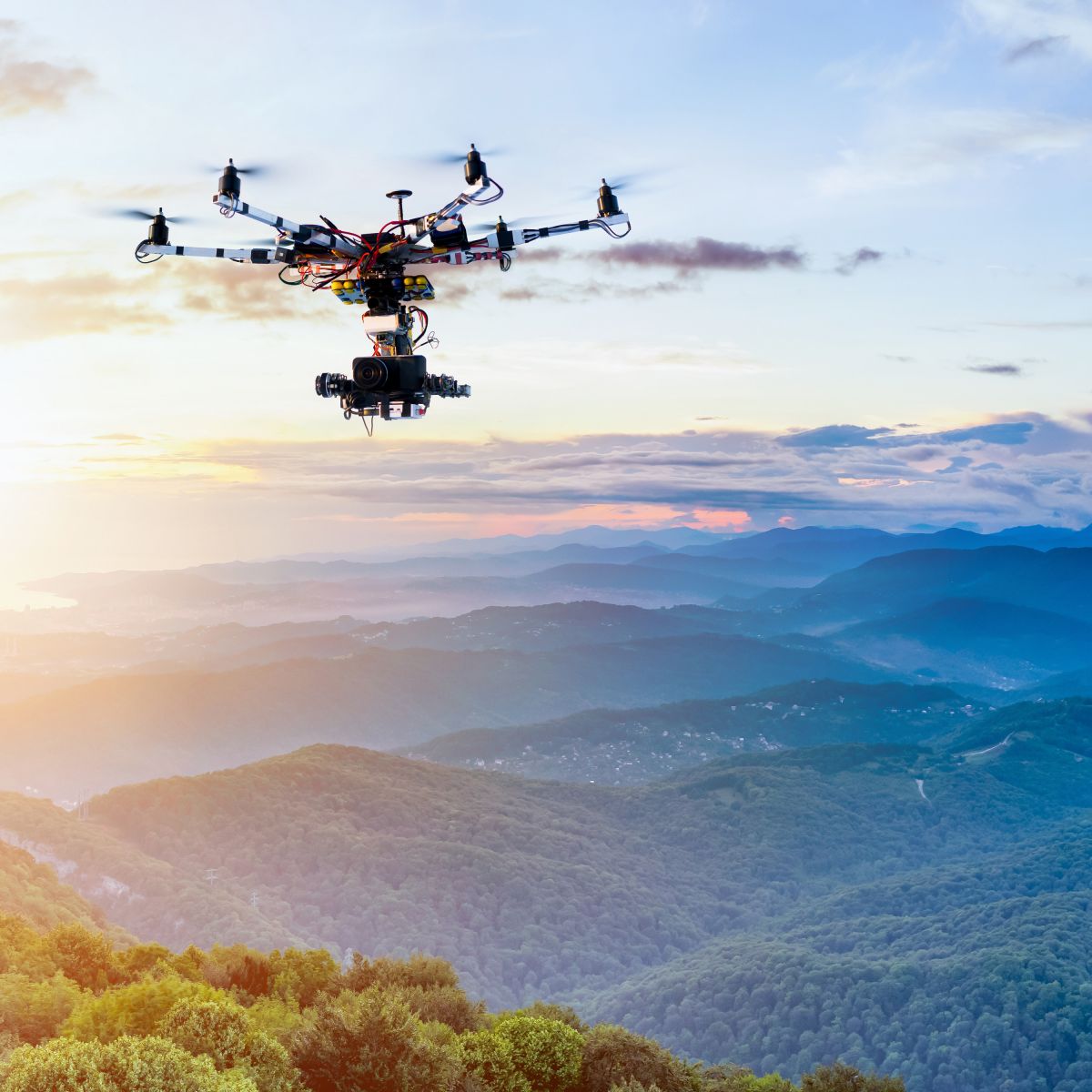
Have you ever dreamed about being a pilot? With technology quickly evolving, it is now possible for the average person to pilot an aircraft by flying a drone. Sure, you’re not on the aircraft (that’s why drones are referred to as a UAS- unmanned aircraft system), but you’re still in control of flying an aircraft through the air, and you can get some amazing footage and do really cool things.
The Skies Are Filling with Drones
You can purchase a very basic drone for less than $100, so they are more affordable than ever. Drone numbers are quickly rising; in fact, the Federal Aviation Administration
(FAA) has 871,984 drones registered. “Registered?” you may ask, “I didn’t know you had to register a drone.” Flying a drone isn’t as simple as opening the box and taking off into the sky.
The FAA requires all drones over 0.55 pounds to be registered. This can easily be done by creating an account with the FAA’s Drone Zone. The FAA also requires that all drones be labeled with the registration number. This can be done by engraving, permanent label, or permanent marker.
There are also other steps you need to take before flying your drone, and the first step is obtaining a certification.
What Kind of Drone Flyer Are You?
What you will be using your drone for and where you will be flying will determine what kind of certification you need. If you will be flying your drone recreationally, for personal enjoyment, then you will just need to pass a safety test. If you will be flying commercially, you will need to get a Remote Pilot Certificate. The FAA website offers a questionnaire to help determine what kind of certification you will need.
TRUST, Part 107, and Remote Pilot Certificates
According to the FAA, “the law requires that all recreational flyers pass an aeronautical knowledge and safety test and provide proof of passage if asked by law enforcement or FAA personnel.” TRUST stands for Recreational UAS Safety Test and meets the requirements needed to fly a drone recreationally. Drone operators may take the free online test through any of the FAA approved test administrators.
Title 14 under the Code of Federal Regulations deals with Aeronautics and Space; Part 107 is the section that deals specifically with unmanned aircraft. Anyone wanting to become an FAA-certified drone pilot must be familiar with these rules. The next steps involve registering with the FAA and passing a knowledge test at an approved testing center. From there, you can obtain your Remote Pilot Certificate. This is required if you want to fly a drone for any sort of commercial purpose.
Safety in the Skies
Regardless of whether you are flying recreationally or commercially, you are responsible for operating your drone safely. A small drone may seem harmless, but it can pose a danger to people on the ground as well as manned aircraft.
There are many types of airspace restrictions in the United States, but the main ones that affect UAS flights include stadiums and sporting events, areas around airports, security sensitive areas (like military bases, National landmarks, and nuclear power plants), and the Washington, DC area. Some airports are even testing drone detecting technology to detect, track, and identify drones entering into restricted airspace.
According to the FAA, “in special circumstances, the FAA may temporarily restrict access to certain designated areas of our airspace, much in the same way a city or state may block off access to a street when necessary.” Temporary Flight Restrictions (TFRs) are communicated to pilots through Notices to Air Missions (NOTAMs). These restrict aircraft (including drones) from operating without permission in a certain area for a limited time. Reasons for TFRs include things like natural disasters, certain major sporting events, and emergency or national security situations.
The FAA offers an app for recreational flyers called B4UFLY that helps show where you can and cannot fly with interactive maps. The maps inform drone pilots of things like controlled airspace and temporary flight restrictions in their area.
New Remote ID Requirements
With so many drones in the sky, the FAA has instituted another safety measure to be able to identify and track drones. As stated by the FAA, “beginning September 16, 2023, all drone pilots required to register their drone must operate their aircraft in accordance with the remote ID rule for pilots, which gives drone owners sufficient time to upgrade their aircraft. Drone manufacturers have until September 16, 2022 to produce drones with built-in standard remote ID.”
The remote ID allows the FAA and law enforcement to find the control station when a drone is flying in an unsafe manner or where they’re prohibited.
All drones manufactured after September 16, 2022 are required to have remote ID capability built-in. If you are flying a drone that does not have remote ID, there are broadcast modules that can be added to a drone to retrofit it with remote ID capability. Another option is flying in an FAA- Recognized Identification Area (FRIA). These are geographic locations where drones can be flown without remote ID equipment. Both the pilot and the drone must remain inside the FRIA’s boundaries during the flight and the drone must be visible to the pilot during the flight.
Have fun and fly safe!
Drones are a fun way to try your hand at piloting. But they aren’t toys; they must be flown safely to protect those on the ground and those in the sky. Be sure to register your drone, get certified (whether it’s the Recreational UAS Safety Test certificate or a Remote Pilot Certificate), and learn and follow the laws.
Once you are FAA-compliant, feel free to crank up the Top Gun soundtrack and let your drone soar!

